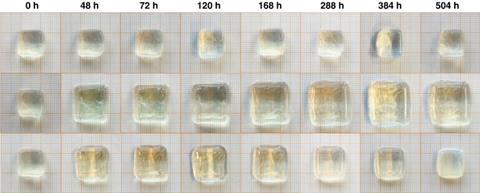Researchers from the Eelkema Lab at TU Delft discovered a reaction cycle that allows them to make hydrogels grow and shrink on command.

Chemist Rienk Eelkema and his group are developing chemical processes in which they mimic nature, with a focus on reactions in living cells that provide the fuel to power the cell. Only a few reactions are known that allow you to drive non-living materials in a similar way, and they have several drawbacks. The rate is difficult to control and they only work on a limited set of molecules.
The Eelkema group discovered a new reaction cycle that can use fuel to control non-living materials. Instead, the new process works on many different materials and the speed is controllable. The hydrogels in which the process takes place can thus swell or shrink with the addition of a certain fuel. According to the researchers, this is a step toward soft robotics, or soft devices that can perform a certain function. They published their results in Nature Communications.
‘The essence of the reaction cycle is that it can switch between an uncharged and a charged particle by adding a chemical fuel,’ Eelkema said in a TU Delft press release. ‘This allows us to charge materials and thereby modify the structures of those materials, because equal charge repels each other and different charge attracts each other. The type and amount of fuel determines the speed of the reaction, and thus how long a charge and a particular structure exists.’












Nog geen opmerkingen